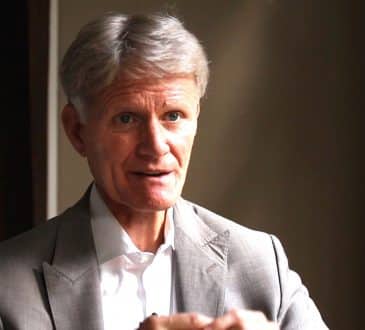The RTO Debate on Balancing Leadership Vision with Employee Trust

The shift toward return-to-office (RTO) policies continues to favor the preferences of CEOs, and this trend is expected to persist. A 2024 survey by KPMG revealed that 79% of CEOs anticipate employees returning to the office five days a week within three years—significantly higher than the previous year’s findings. Many executives view the office as essential for reinforcing company values and fostering strategic alignment across teams.
While employers emphasize the benefits of collaboration, culture, and innovation that an in-person environment provides, employees continue to value the flexibility and autonomy gained from remote work. Without a well-communicated and consistently enforced RTO strategy, organizations risk further diminishing employee trust.
As a workplace strategist and designer, I have been exploring how office spaces can be designed to encourage in-person collaboration while engaging in discussions with clients about their RTO policies.
Jon Martin, North American CEO of AEW Capital Management—one of the world’s largest real estate investment managers—recently highlighted the importance of leadership setting the tone for return-to-office expectations. AEW, a client of my firm Elkus Manfredi Architects, has recently reimagined its Boston headquarters. While the company does not enforce a specific in-office mandate, its leadership team has made it clear that they favor a predominantly office-based culture. To encourage this shift, senior management works in person nearly full-time, reinforcing the expectation through their actions. Martin noted that any RTO policy that is not upheld by leadership quickly loses credibility.
RTO policies frequently fail when inconsistent implementation weakens employee trust. Workers often question whether leadership genuinely considers their needs, values their input, and ensures that in-office mandates will enhance efficiency and purpose. Addressing these concerns requires a structured, thoughtful approach that prioritizes transparency and employee engagement.
Building Trust Through Thoughtful Policy Design
Experience has shown that listening to and involving employees in policy development leads to more effective solutions and greater buy-in. Research indicates that when employees contribute to shaping workplace policies, their commitment to change initiatives strengthens.
To foster trust and ensure a balanced approach to RTO, leaders should adopt the following best practices:
- Establish a shared vision before soliciting feedback. Discussions should be framed around organizational goals, ensuring that responses align with broader business objectives rather than focusing solely on individual preferences.
- Seek input within a structured framework. Providing context and priorities allows for meaningful dialogue rather than open-ended questions like, “Do you prefer working at the office or at home?”
- Be transparent about trade-offs. Employees should be informed early on that while all needs may not be met perfectly, leadership aims to balance individual preferences with organizational priorities.
- Incorporate feedback thoughtfully and communicate decisions clearly. Simply asking for input without addressing it—or worse, disregarding it entirely—can erode trust. Even if not all suggestions are implemented, explaining how feedback influenced decisions fosters a sense of inclusion.
Mutual Trust = A Sustainable Solution
When leadership demonstrates trust in employees, collaboration on organizational changes becomes more effective. Studies suggest that creating internal feedback structures not only enhances employee engagement in decision-making but also leads to improved productivity and profitability.
Encouraging employees to consider the broader impact of workplace decisions fosters a shared investment in the company’s future. Insights into team dynamics and performance allow leaders to communicate workplace strategies that support both individual needs and collective success, ensuring that RTO policies strike a balance between business objectives and employee well-being.
Have you read?
Best countries for hiring freelancers.
Highest Paid Big Pharma CEOs And Top Executives.
Best Websites For CEOs, business leaders, and high-net-worth individuals.
Best Executive Search Firms And Consultants in America.
Revealed: Most Powerful Women In The World.
Bring the best of the CEOWORLD magazine's global journalism to audiences in the United States and around the world. - Add CEOWORLD magazine to your Google News feed.
Follow CEOWORLD magazine headlines on: Google News, LinkedIn, Twitter, and Facebook.
Copyright 2025 The CEOWORLD magazine. All rights reserved. This material (and any extract from it) must not be copied, redistributed or placed on any website, without CEOWORLD magazine' prior written consent. For media queries, please contact: info@ceoworld.biz








